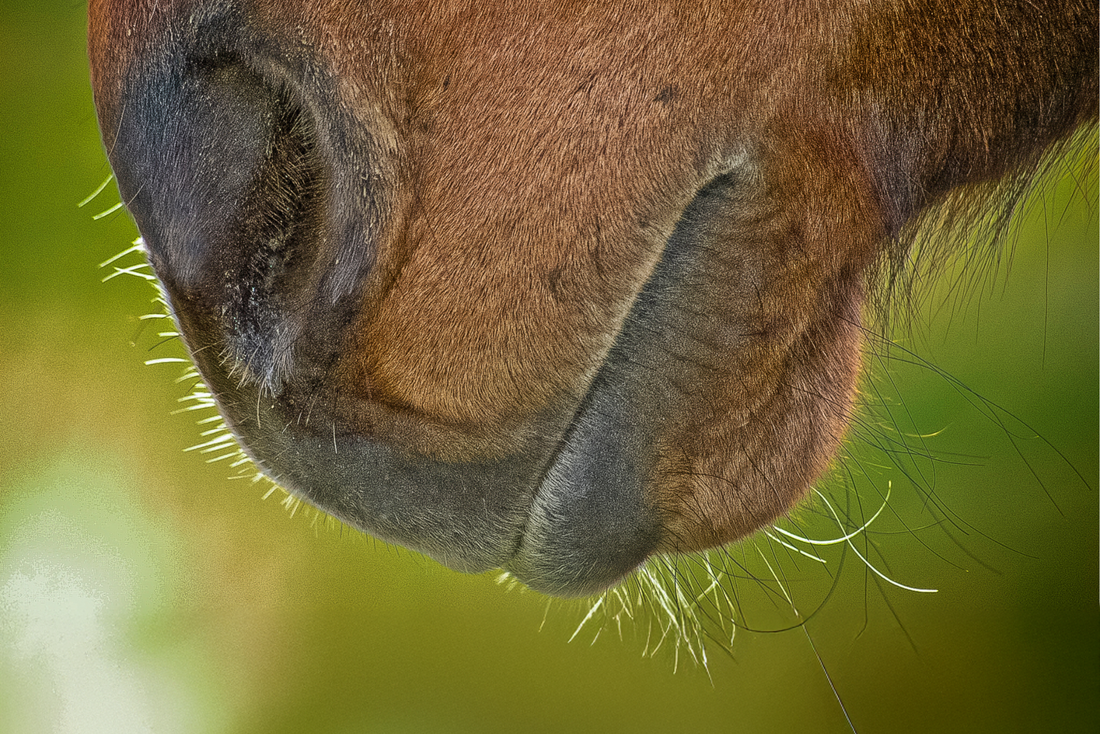Chewing in Horses – Managing restricted forage

Written by Briony Witherow MSc RNutr. FHEA
Whether you’re facing summer drought, managing a good doer’s waistline, or reducing sugar intake for a laminitis-prone horse, restricted forage brings the same challenge: less chewing time. This matters because chewing is not just about eating — it’s a vital part of equine health and welfare.
Why Chewing Matters
Horses evolved to graze for 16–18 hours a day, taking tens of thousands of chews in the process.
The function of chewing à
· Reduces feed particle size, aiding digestion.
· Stimulates saliva production, which buffers stomach acid, providing natural protection against gastric ulcers.
· Promotes natural tooth wear, reducing sharp points.
· Satisfies behavioural needs, reducing the risk of behaviours like crib-biting or wood-chewing.
When chewing time is reduced — through limited turnout, sparse grazing, or restricted forage rations — the effects are both physiological and psychological.
The saliva link
Unlike some animals, horses only produce saliva when chewing. A 500 kg horse on a high-forage diet can produce 30+ litres of saliva daily. This saliva contains bicarbonate, which helps neutralise stomach acid. Reduce chew time, and you reduce this natural buffering system — increasing ulcer risk.
Strategies to Maximise Chewing Time on Restricted Forage
1. Choose forages that take longer to eat
- Long-stem hay encourages more chewing than short-chopped forage or pellets.
- Clean, good-quality straw (introduced gradually) can be mixed with hay to slow intake while controlling calories.
- Coarse-textured (more mature/later cut) forage (which tends to be lower in calories/energy) naturally require more jaw movement.
2. Use feeding methods that slow intake
- Small-holed haynets or double-netting.
- Multiple small haynets placed around the stable or paddock to mimic foraging.
- Ground feeding where safe
Utilising a combination of different feeding stations helps to reduce frustration behaviour, promote natural foraging behaviour and movement (reducing potential for musculoskeletal tension) and extends chew time.
3. Spread forage across the day
- Divide rations into multiple small feeds rather than two large ones.
- Aim to minimise gaps of more than 4–5 hours without forage to keep chew time steady and reduce long fasting periods.
4. Add variety for interest and behavioural enrichment
- Safe hedgerow browse such as hawthorn, or blackberry leaves.
- Succulent vegetables (carrot peelings, celery, courgette) in small, measured amounts — especially useful in hot weather for added moisture.
- Hedgerow haynets or small bundles of browse provided safely in the field or stable to mimic natural browsing.
5. Alternative high fibre feeds
- Low-sugar beet pulp, high-fibre mash, chaffs or nuggets can extend chewing and provide moisture, especially helpful when forage is limited.
- Serve in smaller tubs placed in different locations to encourage movement.
- Always remember to factor these into the total calorie and sugar provision of the ration just like any other feed or forage.
Additional considerations for good doers and laminitis-prone horses
- Prioritise low-sugar forages and safe browse from the lower-sugar category.
- Include straw (up to 30% of the forage ration) to extend chew time without excessive calories.
- Avoid high-sugar treats and keep succulents as a controlled enrichment option.
- Weigh forage to ensure accurate rationing.
Take-Home Points
- Chewing is essential for both gut health and mental well-being — restricted forage means you must work harder to maintain it.
- Slow feeding systems, varied forage sources, and enrichment can help bridge the gap.
- Even when calories or sugar must be controlled, there are safe ways to keep horses chewing for much of the day.
- Whether managing drought conditions or a horse’s waistline, your goal should be the same: maximum chew time within dietary limits
By focusing on chew time as much as forage weight, you can protect your horse’s digestive health and keep their natural grazing instincts satisfied — whatever the season or feeding challenge.
